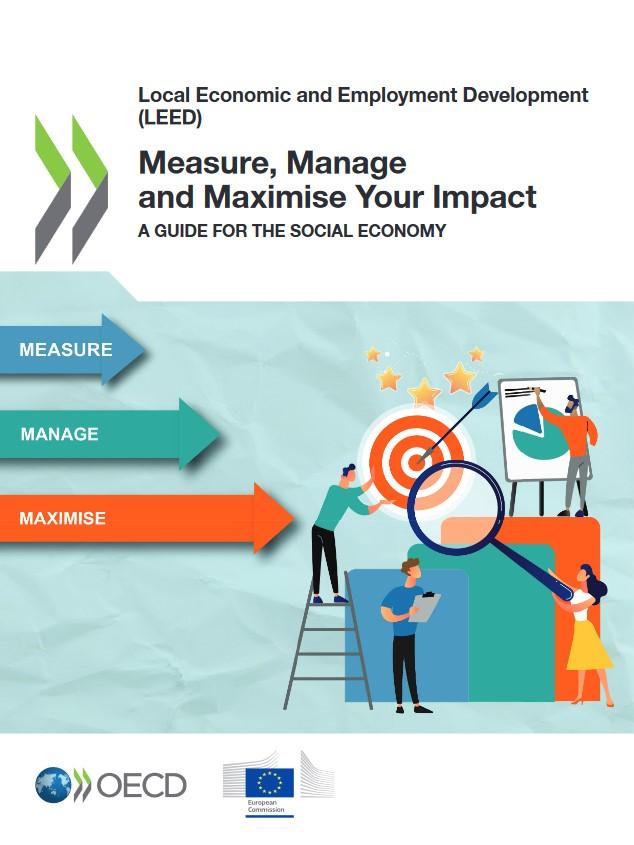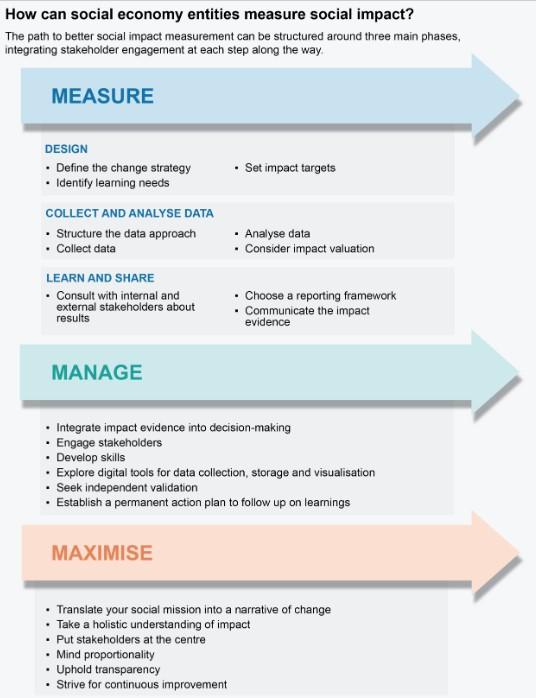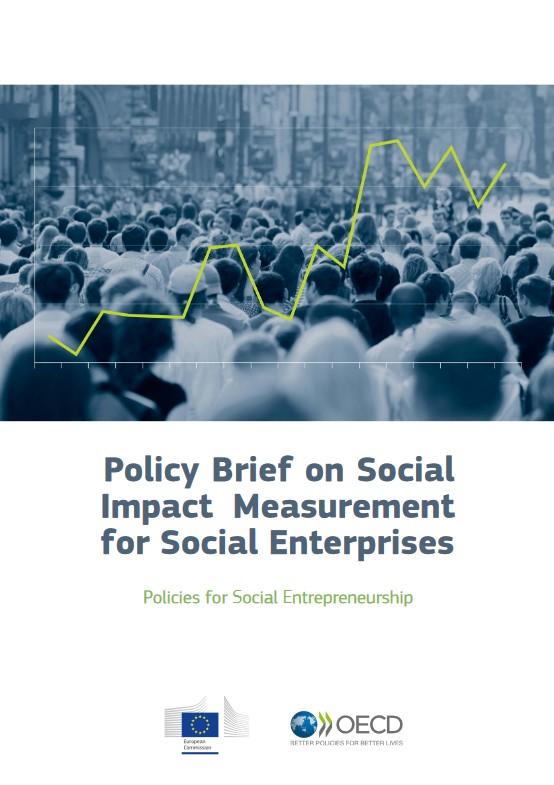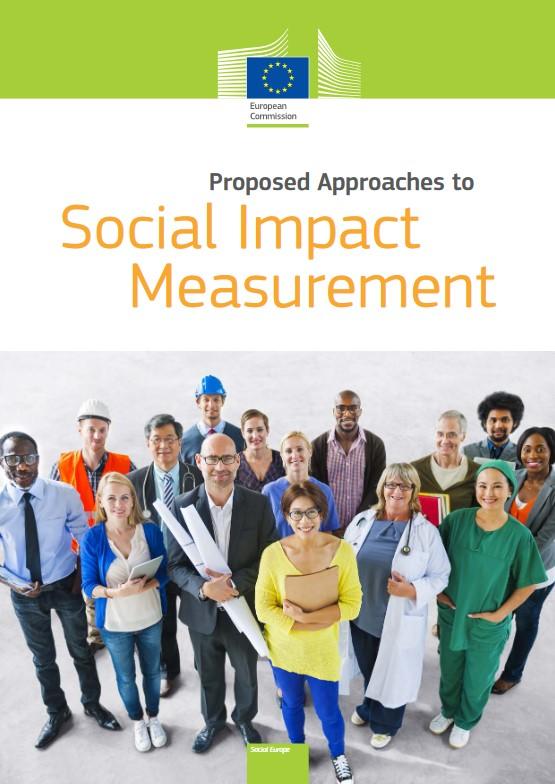Social impact measurement and management (SIMM) is a pivotal concept that involves the systematic evaluation of the social effects of an organisation's endeavours. This process should encompass not only the meticulous collection and analysis of data but also the strategic application of these insights to optimise positive outcomes and mitigate adverse ones.
The significance of SIMM goes beyond mere data collection. It is generally considered as a way of empowering organisations to make informed decisions, fostering accountability and transparency that can build trust among stakeholders. Moreover, a robust SIMM framework can enhance an organisation’s appeal to investors and donors who prioritise social returns, while promoting continuous improvement of programmes and initiatives.
However, the road to effective SIMM is fraught with challenges. The process demands considerable resources and expertise, and the complexity involved can be daunting. Accurate data collection is often difficult, and the absence of standardised metrics can make comparisons between different organisations difficult. There is also a risk that organisations will focus on easily measurable outcomes, potentially overlooking deeper, long-term impacts.
The benefits of SIMM are multifaceted and resonate with a wide range of stakeholders. Nonprofit organisations and social enterprises use it to assess and enhance their impact, while investors and donors seek assurance that their contributions are generating meaningful social returns. Government agencies use SIMM to evaluate the efficacy of policies and programmes, and academics scrutinise its outcomes to gauge the effectiveness of various social interventions. Most importantly, the communities and individuals who are directly affected by these initiatives have a vested interest in understanding how such efforts influence their well-being.
A guide for the social economy
In a world increasingly focused on social progress, and with a growing interest in measuring and managing social impact, recent years have seen a proliferation of methodologies and approaches.
However, SIMM methodologies and approaches need to be tailored to the context in which they are used, as there is no one-size-fits-all approach. Current SIMM practices are largely shaped by funders and for-profit organisations, with a limited focus on the social economy. For the latter, the measuring and managing social impact is not only about accountability, but also about learning and continuous improvement. By systematically measuring their impact, they can refine their strategies, improve resource allocation and ultimately maximise their positive contribution to society.
For this reason, the European Commission and the OECD have jointly produced an important study entitled "Measure, Manage and Maximise Your Impact. A Guide for the Social Economy".
This publication provides a comprehensive and nuanced look at how social economy organisations can effectively measure and manage their impact. Enriched with insights from a wide range of field experts, it provides essential guidance for organisations seeking to make a significant difference in their communities and beyond.

Social impact measurement and management is a particularly helpful practice for social economy entities to understand their contribution to society and potentially improve the achievement of their mission. Impact areas that are particularly important for the social economy, such as economic prosperity and employment, social inclusion and well-being and community, are often the hardest to translate into quantitative metrics. Current social impact measurement and management practices are largely shaped by funders and for-profits with limited focus on the social economy. This guide offers a simple, straightforward approach for social economy entities to measure, manage and ultimately maximise their impact, and to prioritise the use of findings for strategic organisational learning and improvement.
Watch the launch event
The measurement and management cycle
The study introduces a three-phase cycle for SIMM, emphasising the importance of continuous improvement. The first phase, the design phase, involves translating the social mission into clear impact objectives. This requires refining the change strategy, identifying specific learning needs, and setting precise impact targets. Social economy organisations often struggle with this phase, as defining specific objectives can be complex given the multifaceted nature of the societal progress they seek to achieve. Expected social impacts tend to materialise over the long term and may be accompanied by unintended outcomes, both positive and negative. A well-articulated change strategy is therefore crucial not only to the success of the measurement cycle, but also to the achievement of the social mission itself.
The second phase, data collection and analysis, is about structuring the data approach, gathering quantitative and qualitative data, and analysing this information to assess whether the intended impacts have been achieved. This phase often overlaps with the ongoing data analysis, as continuous learning and adaptation is an integral of the process. Social economy organisations may use a variety of tools for data collection, such as surveys, questionnaires, and field observations. The complexity of these steps can vary widely depending on the method chosen. For instance, conducting a randomised control trial involves more steps and stricter protocols than writing a case study.
Data analysis typically involves triangulating multiple data sources to confirm impact and establish causal relationships between activities and social change. For example, social economy organisations may use counterfactual studies to determine whether a change can be attributed to their interventions. Alternatively, contribution analysis can help to understand whether specific activities within the intervention may have contributed to the results, while also testing plausible alternative explanations.
The final phase, learning and sharing, focuses on balancing impact reporting for accountability with learning priorities. This phase involves defining a reporting framework that weaves qualitative evidence into quantitative reporting. It also includes engaging stakeholders—beneficiaries, funders, and community members—to validate findings and ensure that reported impacts accurately reflect their experiences. This phase is crucial for gaining internal agreement on the results of data analysis, conclusions, and any recommendations, which can then be shared with a wider range of stakeholders.
Overcoming challenges
Social economy organisations face several challenges in translating their social mission into observable social change. As noted above, defining specific objectives can be particularly complex due to the multifaceted nature of the societal progress they seek to achieve. Additionally, measuring long-term impacts and unintended outcomes requires careful strategy and robust methodologies. For example, how does one quantify improvements in social inclusion or community well-being? These impact areas are often deeply intertwined with broader social and economic contexts, making them difficult to capture through conventional metrics.
To address these challenges, the study emphasises the importance of using theory of change frameworks such as impact mapping, logic models, or causal chains. These methods help organisations formalise their change strategy by outlining specific steps from their activities to their expected impacts. For instance, the logic model, known for its simplicity, helps organisations understand the direct path from their actions to the impact. Impact mapping, on the other hand, provides a broader view, illustrating the expected changes for both internal and external stakeholders. The most advanced approach, the causal chain, explicitly describes assumptions about how inputs, outputs, and outcomes lead to the expected impacts in a logical or chronological sequence.
Engaging stakeholders
Stakeholder engagement is a critical part of the measurement and management process. Social economy organisations, especially those with participatory governance models such as cooperatives and mutual benefit societies, must involve stakeholders throughout the measurement cycle. This includes ensuring that the interests of all those affected by their operations or interventions are represented in decision-making processes. Stakeholders – from board members and volunteers to clients, beneficiaries, and regulators – are an integral part of scrutinising and debating an organisation’s values, activities, performance, and social outcomes.
Effective stakeholder engagement requires social economy organisations to decide which stakeholders to engage and when. Different measurement tools require different capabilities, and not all tools are appropriate for all audiences due to their complexity, cost, or relevance to the impact being measured. Furthermore, as some interventions aim for longer-term change, it is essential to allocate budget and time to establish and maintain these important stakeholder relationships over time.
Monetising social impact
Many social economy organisations are increasingly interested in understanding the monetary value of their activities. Tools such as Social Return on Investment (SROI) and cost-benefit analysis frameworks help to quantify the economic benefits of social impact. SROI, which originated in social entrepreneurship and impact investment, calculates the value of change created per monetary unit spent on a project or intervention. Cost-benefit analysis frameworks, often used in public policy evaluation, propose to calculate a cost-benefit ratio for one or a few stakeholders by understanding the economic benefits generated by social impact. These monetissation techniques can provide powerful evidence of value to funders and policymakers, demonstrating the tangible benefits of social economy activities.
Ensuring robustness and avoiding impact washing
As impact measurement practices become more widespread, there is a growing risk of "impact washing", where organisations might exaggerate or falsely or superficially claim positive impacts. To mitigate this risk, the study emphasises the need for transparency, disclosure of biases and limitations, application of common quality criteria, and independent verification. Social economy organisations can also seek external recognition of their impact management processes through certifications such as B-Corp or social enterprise labels, which can enhance credibility and trust.
Principles for effective impact measurement
The study outlines several guiding principles for effective SIMM, i.e. impact maximisation:
- Translate the social mission into change: Create a narrative of change with clear impact targets to show how activities will contribute to expected medium and long-term changes.
- Holistic understanding: Account for all consequences, intended and unintended, positive and negative.
- Proportionality: Prioritise relevant and actionable evidence without overburdening the organisation with excessive data collection and analysis.
- Stakeholder-centric: Engage stakeholders throughout the measurement process to ensure their perspectives are included.
- Transparency: Ensure clear communication and assessment of impact data.
- Continuous improvement: Strive for ongoing enhancement of measurement practices to support organisational development, scaling, and impact maximisation.
Conclusion
"Measure, Manage and Maximise Your Impact. A Guide for the Social Economy" is a vital resource for social economy organisations. By adopting the outlined principles and methodologies, these organisations can better demonstrate their contributions to society, make informed decisions, and ultimately achieve greater social impact.
A fundamental aspect highlighted by the study is the need for social impact measurement and management to go beyond a mere reporting logic, particularly in relation to social economy actors. Reporting is often seen as crucial to mitigate opportunistic behaviour and impact washing, as already mentioned above. This frequent association of reporting with transparency and integrity requirements may translate into a compliance mindset in corporate contexts.
However, a compliance approach to SIMM is not the primary objective, especially regarding the social economy, which is inherently oriented towards social purposes. For social economy actors, reporting on SIMM is not about compliance, nor is it simply a tool to prevent opportunistic behaviour. Instead, it is a means to build actionable knowledge for innovation, improvement, and continuous learning.
This approach enables a deeper appreciation of the concept of social impact maximisation, a core pillar of the study. This concept is crucial but underdeveloped in the public debate and should be embraced. The notion of social impact maximization is vital as it positions the social economy as an agent of change. It not only enhances the immediate social outcomes that a social economy organisation can achieve but also facilitates the scaling up of the social impact generated, potentially at a systemic level.
As the social economy continues to grow, a robust SIMM will play a crucial role in driving positive change, fostering transparency, and building trust among stakeholders.
Through continuous learning and improvement, social economy organisations can maximise their positive impact and contribute to a more inclusive and sustainable future.

Further readings
As social and solidarity economy (SSE) entities are increasingly requested to demonstrate their positive contribution to society, social impact measurement can help them understand the additional, net value generated by their activities, in the pursuit of their mission and beyond. Policy plays an important role to facilitate a conducive environment to unlock the uptake of social impact measurement among SSE actors. Drawing on a mapping exercise and good practice examples from over 33 countries, this international policy guide navigates how policy makers can support social impact measurement for the social and solidarity economy by: (i) improving the policy framework, (ii) delivering guidance, (iii) building evidence and (iv) supporting capacity. Building on the earlier publication Social Impact Measurement for the Social and Solidarity Economy released in 2021 the guide is published under the framework of the OECD Global Action “Promoting Social and Solidarity Economy Ecosystems”, funded by the European Union’s Foreign Partnership Instrument. OECD publication details
The OECD Global Action “Promoting Social and Solidarity Economy Ecosystems”, funded by the European Union, through its work stream on social impact measurement, endeavours to: 1) explore current social impact measurement practices among social and solidarity economy organisations; 2) identify the methodologies best suited to capture the social benefits of the social and solidarity economy; and 3) understand what policy initiatives can be used to foster a social impact measurement culture and practice in the social and solidarity economy. After discussing the origins and drivers of social impact measurement, this paper examines existing methodologies developed at the local, national and international level and finally reviews how these are being implemented in the social and solidarity economy. It takes stock of the policy mapping exercise conducted by the OECD, which draws on responses to an online survey and on the stakeholder consultations conducted in Brazil, Canada, India, Korea, Mexico and the United States. OECD publication details

This policy paper on social impact measurement for social enterprises was produced by the OECD and the European Commission. It presents the issues and ongoing debates surrounding social impact measurement and provides concrete examples of measurement methods. It highlights the concept of proportional measurement, in other words balancing up the costs and benefits of the measuring process. The policy brief also looks at guidance and resources for use by social enterprises and how to create a more widespread culture of measurement among stakeholders despite their often limited human and financial resources. Document details


